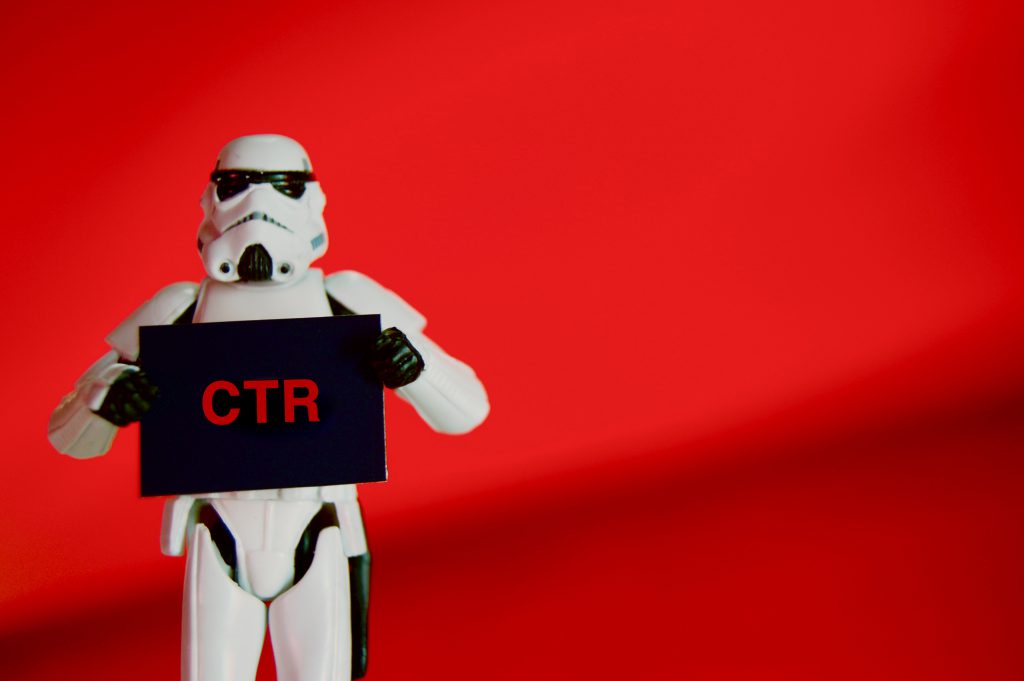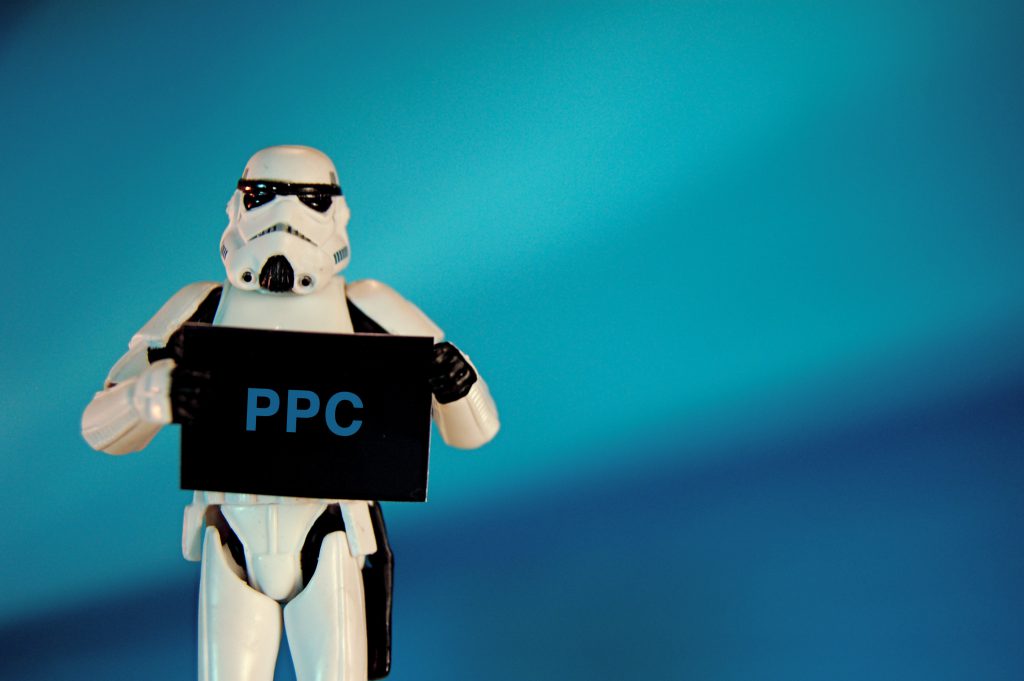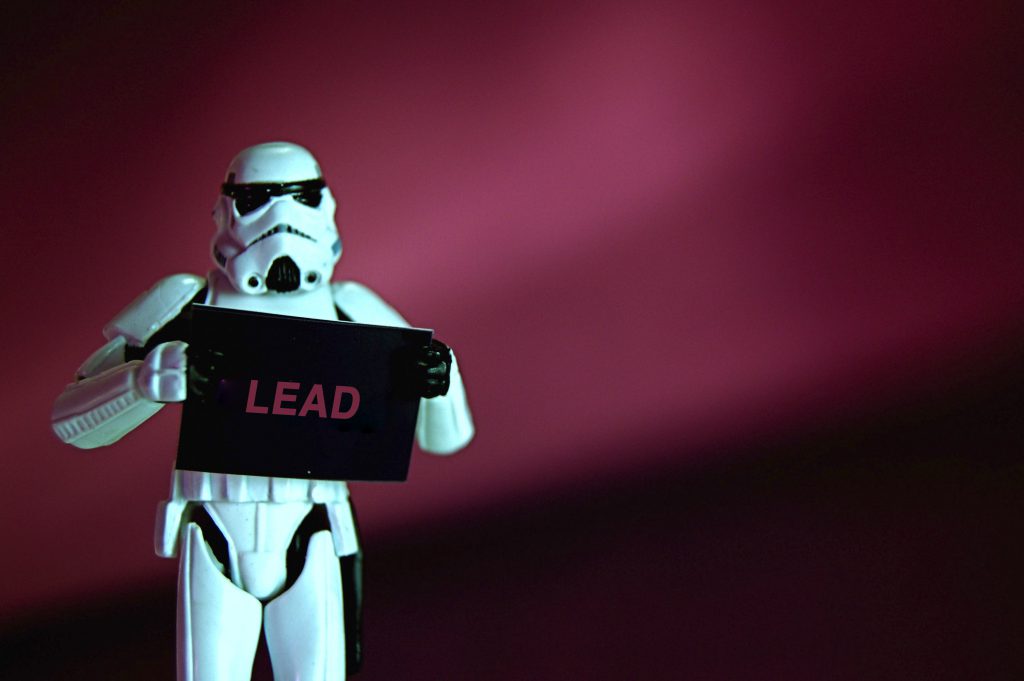
9 Automotive Marketing Buzzwords for New Troopers
It seems as if there are as many automotive marketing buzzwords as there are stars in the galaxy. It’s a confusing thing for those who are new to the force.
In the automotive world, a simple phrase such as “cabin room” no longer refers to the kitchen in a house in the woods, and a “spoiler” isn’t actually the looming threat facing people who still haven’t seen the new Star Wars movie.
Digital marketing terminology makes this confusion even worse. It’s not rare to overhear things like, “Hey dude. What’s the VDP conversion on that Chevy conquesting workflow?” any given workday here at 9 Clouds headquarters. Jargon-filled phrases like that can make you feel like this:

Lift your head, trooper. Every digital marketer goes through this phase of learning the lingo before constructing some Death Star-level digital marketing projects.
These top nine automotive marketing buzzwords will help you launch your dealership’s digital star destroyer in the right direction.

1. CTR
Click-through rate (also known as “click rate” or “CTR“) is one of the most common phrases we hear in digital marketing projects. It’s the percentage of your targeted audience who interact or click on your ad, email, blog post, call-to-action button, or other piece of digital marketing.
For example, our agency measures the CTR of every inbound marketing email – batch or automated – that we send for our clients. Not all CTRs can be compared apples-to-apples because the measurement can be a percentage of a whole audience or a percentage of the audience who actually saw your content. Consistency is key.
CTR is also an important measurement to track on your PPC ads.

2. PPC (and CPC)
PPC stands for “pay-per-click.” It’s a form of digital advertising in which you set a budget and only pay for the clicks your ad receives. The most popular form of PPC is Google AdWords, which shows your relevant advertisements on search engine results pages (also known as SERPs).
Cost-per-click (or CPC) is the exact amount your dealership pays when someone clicks your ad. Average CPC is a key metric to measuring the effectiveness and return on your PPC efforts. Facebook Ads, Bing Ads, AdRoll, and other digital advertising platforms rely on the PPC model.

3. Conversion
When Darth Vader asked Luke to “come to the dark side,” he was essentially asking for a conversion.
Once you use your emails, blogs, social media, and digital ads to bring people to your website, it’s time to get them to commit to your brand. In digital marketing, a conversion is typically defined as a form submission, phone call, or other voluntary action from a visitor who is expressing interest in your products.
At our dealership, we think of conversions as the “finish line” at the end of a digital marketing campaign. It’s the moment when all your digital efforts pay off, and your sales team gets to close a deal.
When tracked correctly, conversions can give your dealership powerful insights into the effectiveness of your digital strategy.

4. Conquesting
No, we’re not talking about the Death Star taking over planetary systems. In fact, it’s much less crazy. Conquesting in the automotive world is the act of taking a share of a segment from your competitor.
The concept is based on the fact that there are a finite number of leads in any given market, so you need to “steal” some of those leads away from other brands. For example, Ford F-150 dealers often “conquest” Silverado and Ram shoppers and owners in an effort to convert them into F-150 drivers.
Conquesting is great for educating customers on the unique values and benefits of your dealership’s brand and products.

5. VDP
A VDP is a “vehicle detail page” on your website. We, automotive marketers, use this term when we set up goals for analytics. For example, one dealership might want “400 VDP views from Facebook ads in March.”
VDPs also play an important role in SEO and conversion. For most dealerships, VDPs are the largest source of digital leads, so it’s important to design them well (or have your website vendor design them well) to get more form submissions.

6. Lead
A lead is a person who has a specific need that your product fulfills. In the auto marketing world, a lead is a person who is interested in purchasing a vehicle.
Leads can be defined in multiple ways, depending on the context. Leads might submit a form, call the dealership, or send an email to the dealership. Or, leads can be identified with behavioral data – clicking on certain links in emails or visiting certain Web pages to indicate interest.
It’s important to note that dealerships can measure leads by quality (how many points of contact they’ve had or how many pages they’ve viewed) and by quantity. For example, in December, your dealership may have had 35 leads (a quantitative measurement) who were interested in used trucks (a qualitative measurement).

7. Remarketing
Remarketing (also known as retargeting) is a method of showing advertisements to people who have qualified as leads in an effort to continue a relationship with them. For example, people who view F-150 inventory pages (or VDPs) might leave your site, and later they see you are remarketing ad on Google or Facebook. This hypothetical ad might bring them back to your updated inventory or ask them to sign up for updates.
As attention spans get shorter and shorter, remarketing can become a valuable part of your dealership’s digital strategy.

8. Sales Funnel
No, we’re not talking about that cone-shaped thing back in your service department. In the digital marketing world, a sales funnel is a model used to measure the progress of a contact toward a sale.
Sales funnels usually have three stages. At the top of the funnel (also known as “TOFU”), people are researching vehicles or learning about maintenance or service. At the middle of the funnel (“MOFU”), people are learning about your brand, exploring your inventory, and “warming up” to your dealership. At the bottom of the funnel (“BOFU”), have converted and are presumably just one phone call or appointment away from purchasing a vehicle.
Dealership marketers use the sales funnel model to measure the number of leads at each stage of the sales cycle.

9. Impressions
Impressions are instances of your advertisement or message being seen by a human. If one person sees your ad three times, it counts as three impressions. If three people each see your ad once, that’s also three impressions.
Impressions help you calculate the CTR of your ad, email, or social media post. For example, if your dealership posts a link on Facebook that reaches 1,000 impressions with 30 clicks, that means it had a CTR of 3%.
May the Force Be With You
Now that you know some automotive marketing buzzwords, you can suit up and go to your next meeting feeling like a storm trooper riding on the Death Star.
But in all seriousness, 9 Clouds is here to help you craft a comfortable, successful digital strategy for your dealership. In fact, you can find most of our secrets in our free ebooks and case studies for automotive marketers.
Looking to get Jedi-level digital advertising? You might be interested in learning more about our online advertising services.
Images: JD Hancock







